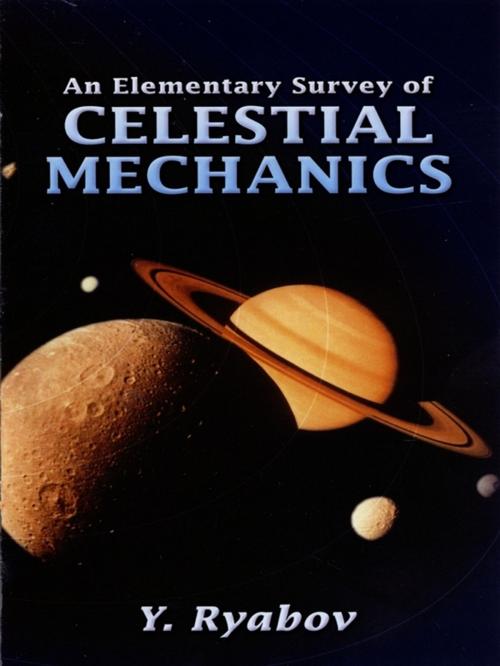An Elementary Survey of Celestial Mechanics
Nonfiction, Science & Nature, Science, Physics, General Physics| Author: | Y. Ryabov | ISBN: | 9780486174488 |
| Publisher: | Dover Publications | Publication: | January 23, 2013 |
| Imprint: | Dover Publications | Language: | English |
| Author: | Y. Ryabov |
| ISBN: | 9780486174488 |
| Publisher: | Dover Publications |
| Publication: | January 23, 2013 |
| Imprint: | Dover Publications |
| Language: | English |
An accessible exposition of gravitation theory and celestial mechanics, this classic, oft-cited work was written by a distinguished Soviet astronomer. It explains with exceptional clarity the methods used by physicists in studying celestial phenomena.
A historical introduction explains the Ptolemaic view of planetary motion and its displacement by the studies of Copernicus, Kepler, and Newton. Succeeding chapters examine the making of celestial observations and measurements and explain such central concepts as the ecliptic, the orbital plane, the two- and three-body problems, and perturbed motion. Ryabov also describes how perturbations in the path of Uranus led to the discovery of Neptune, and he devotes considerable attention to satellites, including a detailed treatment of the first artificial satellite, Sputnik I. Additional topics include planetary rotation, the calculation of units of time, and the motions of the stars, with illustrations of how the law of gravity determines the shapes of galaxies. The book concludes with a deeper consideration of gravity, pointing out basic distinctions between classical and Einsteinian theories.
A historical introduction explains the Ptolemaic view of planetary motion and its displacement by the studies of Copernicus, Kepler, and Newton. Succeeding chapters examine the making of celestial observations and measurements and explain such central concepts as the ecliptic, the orbital plane, the two- and three-body problems, and perturbed motion. Ryabov also describes how perturbations in the path of Uranus led to the discovery of Neptune, and he devotes considerable attention to satellites, including a detailed treatment of the first artificial satellite, Sputnik I. Additional topics include planetary rotation, the calculation of units of time, and the motions of the stars, with illustrations of how the law of gravity determines the shapes of galaxies. The book concludes with a deeper consideration of gravity, pointing out basic distinctions between classical and Einsteinian theories.
An accessible exposition of gravitation theory and celestial mechanics, this classic, oft-cited work was written by a distinguished Soviet astronomer. It explains with exceptional clarity the methods used by physicists in studying celestial phenomena.
A historical introduction explains the Ptolemaic view of planetary motion and its displacement by the studies of Copernicus, Kepler, and Newton. Succeeding chapters examine the making of celestial observations and measurements and explain such central concepts as the ecliptic, the orbital plane, the two- and three-body problems, and perturbed motion. Ryabov also describes how perturbations in the path of Uranus led to the discovery of Neptune, and he devotes considerable attention to satellites, including a detailed treatment of the first artificial satellite, Sputnik I. Additional topics include planetary rotation, the calculation of units of time, and the motions of the stars, with illustrations of how the law of gravity determines the shapes of galaxies. The book concludes with a deeper consideration of gravity, pointing out basic distinctions between classical and Einsteinian theories.
A historical introduction explains the Ptolemaic view of planetary motion and its displacement by the studies of Copernicus, Kepler, and Newton. Succeeding chapters examine the making of celestial observations and measurements and explain such central concepts as the ecliptic, the orbital plane, the two- and three-body problems, and perturbed motion. Ryabov also describes how perturbations in the path of Uranus led to the discovery of Neptune, and he devotes considerable attention to satellites, including a detailed treatment of the first artificial satellite, Sputnik I. Additional topics include planetary rotation, the calculation of units of time, and the motions of the stars, with illustrations of how the law of gravity determines the shapes of galaxies. The book concludes with a deeper consideration of gravity, pointing out basic distinctions between classical and Einsteinian theories.















